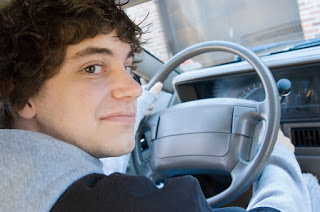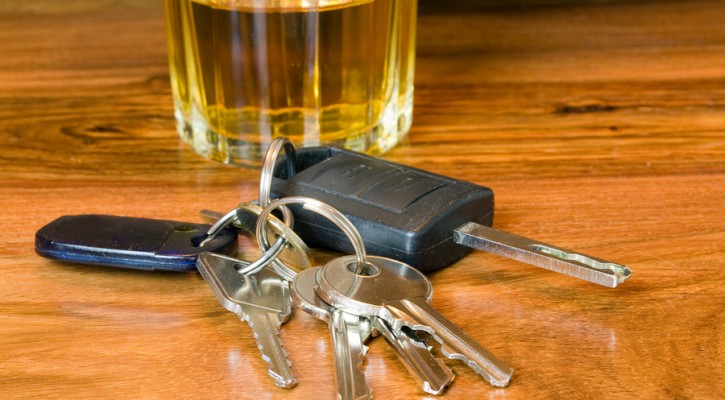Tag Archive: teen driving accidents

Teens and Nighttime Single Vehicle Crashes
November 16, 2009
As you read the daily news, a familiar pattern begins to occur. You begin to notice the car crashes that happen at night with only one vehicle involved. Many times, these crashes involve teen drivers.
Is it your imagination? No.
Many typical characteristics of teen crashes are:
- Teens are more likely than any other age group to be involved in a single vehicle crash. Among passenger vehicle drivers’ ages 16-19 involved in fatal crashes in 2008, 49 percent were involved in single-vehicle crashes. (Insurance Institute for Highway Safety)
- Nighttime fatal crash rates for 16 year olds are nearly twice as high as daytime rates. Centers for Disease Control and Prevention (CDC)
- In 2008, 37 percent of the 15- to 20-year-old male drivers who were involved in fatal crashes were speeding at the time of the crash.
Nighttime driving not only diminishes a driver’s visibility, but also their distance and speed perception, making it harder to judge a situation and respond quickly. Speeding decreases the time and space available to react and increases the severity of any injuries. Many times teenagers react too quickly and overcorrect or lose control of the vehicle, resulting in a single-vehicle crash. Drowsy driving is also more prevalent at night, and teens are especially vulnerable to fatigue and need additional sleep during this developmental time. In addition, other drivers on the road are more likely to be less attentive, drowsy or under the influence at night.
What can be done?
Create and enforce stricter Graduated Drivers Licensing (GDL) laws that give teens the privilege of driving but limit their exposure to higher risk situations encountered, by restricting nighttime driving, teen passengers and cell phone use. Experience behind the wheel is best gained in the daytime when accompanied by an experienced adult driver and under ideal driving conditions. GDL has proved successful in reducing crashes and fatalities among teen drivers as they progress to unrestricted driving at age 18.
Teens are ready to drive and need to be given the tools to drive safely. Understand the risk factors that young teen drivers face and place limits on driving privileges until they acquire the valuable experience needed to develop those tools safely.

Teens and Motor Vehicle Crashes
August 28, 2009
The tragedy occurred on the last day before summer vacation. An SUV transporting a group of teens to the beach rolled over after a tire blowout. In the aftermath, four teens died, four were hospitalized, and the teen driver faced criminal charges.
Almost everyone knows a distressing story like this one; deaths of teens due to motor vehicle crashes are often well-publicized amid great community sympathy for the loss of young lives and the potential they held, as well as the devastation of surviving parents and friends. And they speak to a larger statistical reality – that motor vehicle crashes are the leading cause of death for 15- to 20-year-olds, according to the National Center for Health Statistics – that much of America seems to be both aware of, but unsure of how to change.
Consider the following statistics from the National Highway Traffic Safety Administration (NHTSA):
- There were 202.8 million licensed drivers in the United States in 2006 (2007 data not available). Young drivers between 15 and 20 years old accounted for 6.4 percent (13.0 million) of the total, a 7.2-percent increase from the 12.1 million young drivers in 1996.
- In 2007, 13 percent (6,982) of all drivers involved in fatal crashes (55,681) were young drivers age 15 to 20 years old, and 15 percent (1,631,000) of all drivers involved in police-reported crashes (10,524,000) were young drivers.
- In 2007, 3,174 15- to 20-year-old drivers were killed and an additional 252,000 were injured in motor vehicle crashes.
- Among 15- to 20-year-old drivers involved in fatal crashes in 2007, 31 percent of the drivers who were killed had been drinking.
- In 2007, 64 percent of the young drivers of passenger vehicles involved in fatal crashes who had been drinking were unrestrained. Of the young drivers who had been drinking and were killed in crashes, 75 percent were unrestrained. -During 2007, 35 percent of the motorcycle riders between 15 and 20 years old who were fatally injured in crashes were not wearing helmets.
In addition to mistakes made while driving, teens are susceptible to other lapses in judgment concerning motor vehicles that can lead to injury or death, such as car surfing. According to Science Daily, the states with the highest car-surfing fatality rates are California, Florida, and Texas; all three states have shown an increase in car-surfing deaths since 2000.
Though these three states show high levels of risky teen behavior concerning motor vehicles, a study conducted by Allstate Insurance Company indicated that rural areas have much higher rates of fatal motor vehicle crashes involving teen drivers than metropolitan areas; consequently, states with large rural areas have the highest rates of fatal crashes involving teen drivers. These states are:
- Mississippi
- Alabama
- Kentucky
- Missouri
- Arkansas
Nationally, Allstate’s research showed, fatal crash rates for teens were more than twice as high in rural areas than in metropolitan areas.
While considerable attention is paid to the issue of drunk driving among teens, law enforcement agencies report that speeding is the leading cause of motor vehicle crashes involving teen drivers. Allstate’s study found that law enforcement identified speeding as a factor in 34% of motor crashes nationwide, while alcohol was cited in just 12% of crashes.
In addition to the risk teens take when driving or when riding in a vehicle with other teens, teens suffer when a member of their peer group dies in a motor vehicle crash, particularly when they suffer multiple losses from crashes such as the example at the beginning of this article. Because of the feeling of invincibility that is characteristic of this age group, teens typically have not considered the deaths of people their age a possibility, so when such a thing occurs, their world may seem to be crashing down around them. This means that even teens who were not particularly close to the person who died can be stunned by their reaction to it. Due to their level of psychological maturity, teens are ill-equipped to understand the grieving process and may be overwhelmed by feelings of being out-of-control, insecure, and scared, in addition to sorrow and grief. They may descend into melancholy that lasts years, greatly affecting their development. Some teens numb their feelings by participating in high-risk activities such as:
- Alcohol and drug abuse
- Reckless sexual activity
- Withdrawal from family and friends
- Taking risks involving motor vehicles
Depending on the loss, some teens experience a change in their circle of friends. Obviously, this can have positive or negative results, but regardless, it is another change in a rapidly changing world for the teen. Teens who lose friends to death may see their grades drop and their focus change as they struggle to fit into a new group of friends at a time when they feel especially vulnerable.
Parents and other authority figures can help teens channel their grief in healthier ways by:
- Being available to listen – not, necessarily, to talk
- Allowing teens the freedom to process their grief with others, such as friends, extended family, and professional counselors
- Encouraging teens to express themselves through writing, drawing, and memorializing their deceased friends
- Realizing that the teens’ mourning process may be prolonged and letting teens know that there is no timetable for grief
Though the federal government, state governments, and community-based organizations are making efforts to reduce the number of teens who die in motor vehicle crashes, the statistics above indicate that there is still much work to be done. Forty-six states and the District of Columbia have three-stage Graduated Driver Licensing (GDL) programs in which restricted licenses are issued to beginning teen drivers, with the restrictions reduced over time. However, no state has incorporated all of the GDL components recommended by the Insurance Institute for Highway Safety, the National Transportation Safety Board, and NHTSA.
State-level programs that include peer-to-peer teaching and learning about driver safety are effective in reducing teen motor vehicle crash rates. Texas’ Teens in the Driver Seat is one such program; teen crash deaths have dropped 32% and the number of teen drivers involved in fatal motor vehicle crashes is down 33% since the program began. A similar program in Illinois called Operation Teen Safe Driving has helped achieve a 10% reduction in teen motor vehicle fatalities in Illinois during the first seven months of 2009. Mothers Against Drunk Driving (MADD), Students Against Destructive Decisions (SADD) and other advocacy groups sponsor many public education campaigns to persuade teens not to drive under the influence of alcohol or drugs.

Five Worst Teen Driving Mistakes: Part Two
December 19, 2008
Most parents live in dread of the day their teens get driver’s licenses and get behind the wheel on their own. Their concerns are well-founded, since teen drivers have the highest death rates in car crashes of any age group. Motor vehicle crashes are the number one cause of death among Americans aged 15-20. But parents can help their teens be a safer driver even after they are licensed, particularly by paying attention to common risk factors. In this five-part series, we’ll discuss the five worst teen driving mistakes:
- They don’t wear safety belts.
- They drink and drive.
- They panic/overcorrect in emergency situations.
- They drive too fast for conditions.
- They ride with other teens.
In this, part two of the series, we’ll discuss the risk teens take by driving after drinking alcohol. Teens are at far greater risk of death in an alcohol-related crash than the overall population, despite the fact they cannot legally purchase or publicly possess alcohol in any state. (National Highway Traffic Safety Administration)
Did you know?
- During 2006, 7,643 15- to 20-year-old drivers and motorcycle operators were involved in fatal traffic crashes across the nation, 1,377 (18 percent) of whom had a blood alcohol concentration (BAC) of .08 or higher.
- Nationally, 64 percent of all drivers or motorcycle operators ages 15 to 20 who were involved in fatal traffic crashes and had a BAC of .08 or higher died as a result of the crash.
- Violators of underage drinking laws often face a trip to jail, the loss of their driver’s license, and dozens of other unanticipated expenses including attorney fees, court costs, and other fines. Plus, there is the added embarrassment, humiliation, and potential loss and consequence related to academic eligibility, college acceptance, scholarship awards, and more.
- Most of those killed in alcohol-related crashes involving teen drivers are the young drivers themselves and their passengers.
All states now enforce a minimum drinking age of 21. Nevertheless, alcohol related crashes are still a top safety problem. Make sure your teen understands:
- Alcohol is not actually digested; it’s processed. It’s absorbed directly through the lining of the stomach into the bloodstream. This is why the body feels the effect so quickly.
- Alcohol has its first and greatest effect on the parts of the brain that control judgment and reasoning, the most critical skills needed by drivers. Physical abilities become impaired soon after.
- As more alcohol enters the bloodstream, the area of the brain that controls muscular movements and body control begins to slow down. Even after the driver recognizes danger, the brain takes longer than normal to process the information and react to the danger. Messages the brain sends to different parts of the body might become confused.
- A driver affected by alcohol has a decreased ability to reason clearly and to make sound judgments. However, the driver may feel as though thinking and judging abilities are sharper and quicker than usual.
- Alcohol quickly diminishes the ability to concentrate. A decrease in the ability to concentrate greatly increases a driver’s level of risk. A person’s driving ability can be reduced after only one drink.
- The muscular reactions of a driver who has been drinking can become slow and clumsy. Steering and braking movements can become uncoordinated. The driver might over-steer, brake late or not brake at all. The driver might not be able to negotiate turns properly and safely. Such actions cause drinking drivers to be involved in serious crashes.
Make sure your teen knows that she or he can always call you for a ride, whether the teen is intoxicated or is faced with the prospect of riding with a driver who has been drinking. Make a pact in which you promise to pick up your teen without questions or lectures. You can have a discussion about the issue the following day, when you are calmer and your teen is safe at home.
